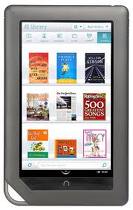 The Kindle Review has a roundup of reviews of the new B&N Nook Color. They excerpt David Camoy from CNet, Melissa Petersen from ComputerWorld, Joshua Topolsky from Engadget, Dan Costa and David Pierce from PC Mag, John Biggs from CrunchGear, Gizmodo, and the author’s own thoughts.
The Kindle Review has a roundup of reviews of the new B&N Nook Color. They excerpt David Camoy from CNet, Melissa Petersen from ComputerWorld, Joshua Topolsky from Engadget, Dan Costa and David Pierce from PC Mag, John Biggs from CrunchGear, Gizmodo, and the author’s own thoughts.
Here’s an excerpt from the author’s thoughts about the Kindle vs. the Nook Color:
The focus on reading means that Kindle vs Nook Color comparisons might be far more relevant than everyone had thought. My Kindle vs Nook Color post had concluded they were completely different devices and to a certain extent they are.
However, B&N is approaching three segments of the reader market – semi-casual readers (a few books a year), casual readers (a book a month), borderline serious readers (a couple of books a month) and offering them an incredible value proposition.
Kindle 3 targets one of these three segments (borderline serious readers) and Kindle Apps for various platforms target the other two segments. The latter strategy is working exceptionally well as illustrated by the recent iPad survey (500 people only) which showed that more people read on Kindle for iPad than on iBooks.Nook Color is very tempting to people in all three of these categories and if Amazon doesn’t move quickly to address the threat (price cuts, Color Kindle, etc.) it will start losing all three segments to B&N. It’s doubtful that B&N thought through things in this way – it probably just wanted to replace eInk readers with color ereaders. However, it’s put itself into prime position to go from 15% market share in eReaders and eBooks to 30% or more.


















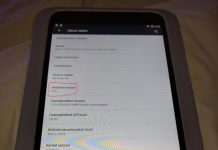

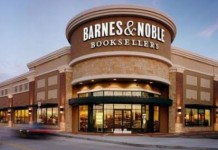
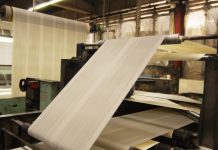
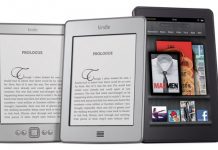











Sorry, but I just don’t see the need for color. I’m what you would call a VERY serious reader and color is at the very bottom of my list of “what ifs”.
As color e-readers come down in price, I think they will appeal to a niche market…those who want one for cookbooks or children’s books or as a second e-reader for magazine reading.
It is easy to imagine a low-priced color e-reader replacing all the cookbooks on someone’s kitchen shelf, but for general fiction and non-fiction readers, (and I believe that covers the majority of e-book owners), color is unnecessary. We want a reading experience that closely duplicates that we had with paperbooks: black ink on white paper. No rainbow colored ink needed.
I don’t see the couple-of-books-a-year reader or even the couple-of-books-a-month reader paying $250 for a color e-reading device. Plus, you have to ask what kinds of books those casual readers would normally purchase, and that brings you back to paperbooks printed in black ink on white paper.
Four years from now, (the time it would take the two $30 books/year reader to recoup his $250 nook investment), we’ll undoubtedly have a new generation of e-ink that will reproduce both black and white fiction and color cookbooks equally well, but for now, color is just a gimmick, and, (until they fix that screen glare thing), just an inside toy.
I think you are spot on Lenne.
I am also curious about the quote above where it infers that neither B&N and Kindle is targeting the ‘serious’ reader ?
I can see where the couple-of-books-a-year reader would invest in the Nook Color. These readers often do not look beyond the “in” factor and being first on the block to own a color reader could be “in”.
I consider myself a serious rreader. Between hardcover and ebooks, I buy 8-12 books (and quite often more) every month and I subscribe to 15 magazines of which 5 are weeklies. I do not watch TV at all, preferring to spend my leisure time reading. Currently, I see no need for a color reader, but that is largely because I do not want an LCD screen.
I recently bought the new Sony 950 (and gave my 3-year-old Sony 505 to my wife). I hesitated buying the 950 when B&N announced the color Nook, until I learned that it was LCD. I expect that my next device will be color eInk (or similar type of screen). Color isn’t high on my list either, but it isn’t absent from it.
I read six to twelve books per month. No magazines. An occasional non-fiction book might benefit with a few color pictures, but not in the long run with I think of the downsides of LCD screens.
Nook color might lure in some buyers who think without thinking that color will be better. The truth is that mostly reading fiction and non textbook non-fiction needs color about as much as celibate nuns need condoms.
I read on a Kindle and it’s much better than my old color Dell PDA, iPad, or iPhone for reading. I’d probably skip a color Kindle even if it were e-ink.
One of the risks the Nook Color has is not being focussed on “just an ereader” or an “Android tablet wannabe”: it will be easy to annoy both groups. You get colour, but you lose some standard ereader efficiencies (weight, battery life, crisp b&w, etc) — that’s quite a compromise for the “just an ereader” group. The for “Android tablet wannabe” you get a cheap entry point, but you lose the Android environment and are tied to the (not yet released) Nook app store; and it is a very basic hardware driven by cost compromises.
The second risk is how much colour content is available to purchase. If there isn’t enough for the typical consumer for their own use, the device could languish. It is competing with the rich content on the Internet; once you have a few colour ePub cookbooks, is the device still as compelling? This applies to magazines as well: how much content is available, at a reasonable price, for the consumer to shift spending to the Nook Color?
And, of course, the device is locked to US sales only.
I believe you are absolutely right Alexander. I find it a strange time for them to bring out a colour device. It seems more of a vanity effort than a smart targeted device. Comics, children’s and cookery books, web browsing but not a core eBook reading device.
I read 5 to 10 ebooks a month, so I guess I fall into the serious reader category. The NookColor doesn’t really appeal to me. However, if I were in the market for a reader-sized tablet, I’d wait for a fully functioning tablet offering access to the entire Android Market, including all the various reading apps.
As a casual user of the Nook apps, I’m not convinced B&N will prove successful with casual readers. When I was in the market for a wifi reader this summer, my experience with the Kindle apps was what prompted me to buy a Kindle 3. My experience with the Nook apps was such that I would probably never buy a Nook. It’s irritating to have to keep my credit card info up on to date on my B&N account in order to maintain error-free access to the few B&N ebooks on my Nook apps.
Interesting take on the color nook, I have put off e-readers for quite some time because many of what I deal with are art history books and e-ink just isn’t going to cut it for me. I had a chance to check out the color nook this evening and have to say that between its full color display (excellent for art history) the fact that it runs on android (in the process of starting a company with an associate dealing with android apps) couple that with the gallery aspect of it (able to show prospective clients designs or customers currently available artwork) roll all of that up together with a max of 38gigs of space, wifi/3g and the ease of taking it with me instead of a laptop, I think I will probably be purchasing the color nook, especially since it does almost everything I could want (microsoft has abandoned their Courier project and the HP Slate 500 is sadly $800 and backlogged for orders and I did just buy a new laptop recently.)